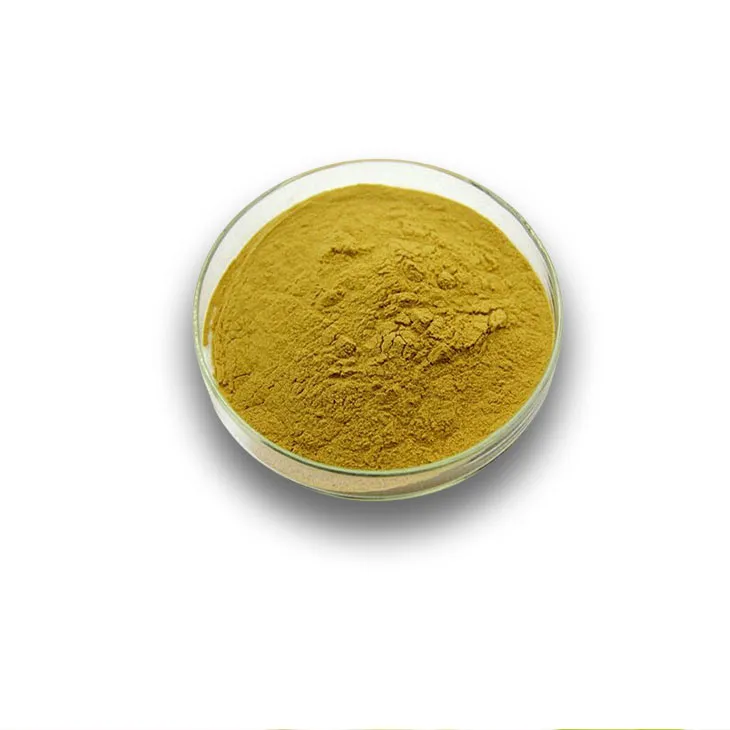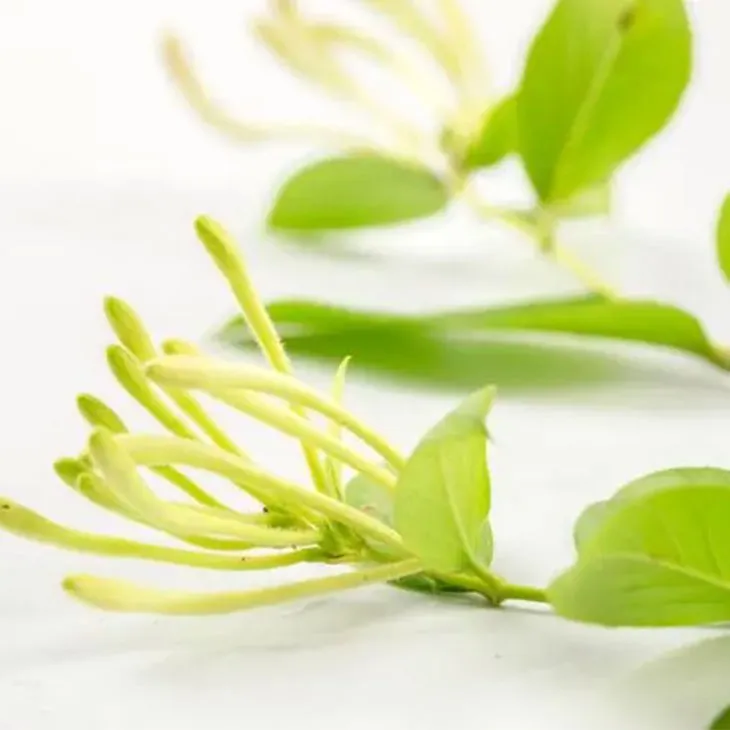- 0086-571-85302990
- sales@greenskybio.com
Honeysuckle pollen: nature's best - kept secret.
2024-11-12

Introduction to Honeysuckle Pollen
Honeysuckle Pollen is truly a remarkable entity in the natural world. It represents a microcosm of nature's complexity, a tiny yet powerful part of the honeysuckle plant's life cycle. This pollen is not only essential for the reproduction of the honeysuckle but also holds a wealth of secrets that are gradually being uncovered by scientific research.

The Chemical Composition of Honeysuckle Pollen
Unique Chemical Components
Honeysuckle pollen contains a diverse range of chemical components. These include various proteins, lipids, and carbohydrates. However, it is the presence of some specific bioactive compounds that has attracted the attention of researchers. For example, certain flavonoids and phenolic acids have been identified in honeysuckle pollen. These compounds are known for their antioxidant properties, which play a crucial role in protecting cells from damage caused by free radicals. The antioxidant activity of these components in honeysuckle pollen may potentially contribute to its use in treating certain diseases related to oxidative stress, such as some neurodegenerative disorders and cardiovascular diseases.
Medicinal Potential
Studies are underway to explore the medicinal potential of honeysuckle pollen. In traditional medicine, honeysuckle has long been used for its anti - inflammatory and antibacterial properties. The pollen may also possess similar properties. Some research has suggested that the bioactive compounds in the pollen could have anti - microbial effects, which could be beneficial in fighting against certain infections. Moreover, there is growing interest in understanding how the unique chemical makeup of honeysuckle pollen could be harnessed for immunomodulatory purposes. By modulating the immune system, it might be possible to enhance the body's defense mechanisms against diseases.

Honeysuckle Pollen in Agriculture
Improving Cultivation
Understanding honeysuckle pollen is of great significance in the field of agriculture. Knowledge about the pollen can help in improving the cultivation of honeysuckle plants. For instance, by studying the pollination process involving the pollen, farmers and growers can optimize the environmental conditions to ensure successful pollination. This includes factors such as temperature, humidity, and the presence of pollinators. If the pollen is not properly transferred between flowers, the fruit set and overall yield of honeysuckle can be severely affected.
Enhancing Yield
Proper management of honeysuckle pollen can also lead to enhanced yield. By ensuring that there is an adequate supply of viable pollen, the number of fruits produced by the honeysuckle plant can be increased. This can be achieved through techniques such as controlled pollination, where pollen is manually transferred to the receptive stigmas of the flowers. Additionally, understanding the genetic factors related to pollen production and quality can help in breeding programs aimed at developing high - yielding honeysuckle varieties.

The Aesthetics of Honeysuckle Pollination
A Beautiful Natural Phenomenon
The process of honeysuckle pollination involving its pollen is a sight to behold. It is a beautiful natural phenomenon that showcases the harmonious coexistence of plants and insects in nature. Bees, butterflies, and other pollinators are attracted to the sweet nectar of honeysuckle flowers. As they move from flower to flower in search of nectar, they inadvertently pick up and transfer the pollen. This transfer of pollen not only enables the reproduction of the honeysuckle but also creates a dynamic and visually appealing scene in nature. The delicate petals of the honeysuckle flowers, combined with the busy activity of the pollinators, form a picture of nature's beauty and complexity.
Symbol of Coexistence
Honeysuckle pollination serves as a symbol of the coexistence between plants and insects. The relationship is mutually beneficial. The plants provide nectar as a food source for the insects, while the insects, in turn, ensure the pollination of the plants. This symbiotic relationship has evolved over millions of years and is a testament to the delicate balance of nature. The honeysuckle pollen is at the heart of this relationship, acting as the link that binds the two entities together.

Challenges in Studying Honeysuckle Pollen
Collection and Preservation
One of the major challenges in studying honeysuckle pollen is its collection and preservation. Pollen is extremely small and delicate, and collecting it without causing damage or contamination can be a difficult task. Specialized techniques and equipment are required to ensure that the pollen is collected in a pure and viable state. Once collected, preserving the pollen's integrity for further analysis is also a challenge. Factors such as temperature, humidity, and exposure to air can all affect the quality of the pollen over time.
Complex Chemical Analysis
Another challenge lies in the complex chemical analysis of honeysuckle pollen. Due to the presence of a wide variety of chemical components in the pollen, accurately identifying and quantifying these components can be a complex process. Advanced analytical techniques such as chromatography and mass spectrometry are often required. However, these techniques are not always readily available and can be expensive to operate. Moreover, the interpretation of the data obtained from these analyses requires a high level of expertise in the field of plant biochemistry.
Future Prospects of Honeysuckle Pollen Research
Medical Breakthroughs
The future of honeysuckle pollen research holds great promise in the medical field. With further exploration of its chemical components and their potential biological activities, there is a possibility of developing new drugs or therapies. For example, if the anti - inflammatory and immunomodulatory properties of the pollen can be fully understood and harnessed, it could lead to the development of novel treatments for autoimmune diseases. Additionally, the antioxidant properties of the pollen may be further explored for anti - aging and skin health applications.
Agricultural Innovations
In the agricultural sector, future research on honeysuckle pollen could lead to significant innovations. By developing more efficient pollination techniques based on a deeper understanding of the pollen, it may be possible to increase the productivity of honeysuckle cultivation on a large scale. This could also have implications for the development of sustainable agriculture practices, as honeysuckle is often used in agroforestry systems. Moreover, genetic engineering techniques could be applied to improve the quality and quantity of pollen production in honeysuckle plants.
Conservation of Pollinators
As research on honeysuckle pollination progresses, it will also highlight the importance of conserving pollinators. The relationship between honeysuckle and its pollinators is so intertwined that any threat to the pollinators will ultimately affect the survival and reproduction of the honeysuckle. By promoting the conservation of pollinators such as bees and butterflies, we can ensure the continued existence of the beautiful honeysuckle pollination process and all the benefits it brings, both aesthetically and ecologically.
FAQ:
What are the unique chemical components in honeysuckle pollen?
Currently, research has shown that honeysuckle pollen contains various bioactive substances such as flavonoids, polysaccharides, and some amino acids. These components are thought to be related to its potential in treating diseases. However, further in - depth research is still needed to fully understand and isolate these unique chemical components.
How can understanding honeysuckle pollen improve honeysuckle cultivation?
By understanding the characteristics of honeysuckle pollen, such as its pollination mechanisms and requirements, farmers can better manage the pollination process. For example, they can introduce appropriate pollinators at the right time, or create a more favorable environment for pollen transfer. This can lead to better fertilization of honeysuckle plants, ultimately increasing the yield and quality of honeysuckle.
What diseases may honeysuckle pollen potentially treat?
Some preliminary studies suggest that honeysuckle pollen may have potential in treating inflammatory diseases due to its anti - inflammatory components. It may also play a role in enhancing the immune system. However, these are still in the research stage and more clinical trials are required to confirm its effectiveness in treating specific diseases.
How does the process of honeysuckle pollination occur?
The process of honeysuckle pollination typically involves insects. Honeysuckle flowers produce nectar to attract insects. When insects visit the flowers in search of nectar, pollen grains attach to their bodies. As the insects move from one flower to another, they transfer the pollen, allowing for fertilization to take place. This process is a crucial part of the reproductive cycle of honeysuckle plants.
Why is honeysuckle pollen considered nature's best - kept secret?
Honeysuckle pollen is considered nature's best - kept secret because it has only recently started to be extensively studied. Despite its long existence in nature, its complex chemical composition and its potential in various fields such as medicine and agriculture were not fully recognized until relatively recently. Also, its small size and the delicacy of the pollination process make it a hidden wonder of nature.
Related literature
- The Chemical Composition of Honeysuckle Pollen: A Comprehensive Analysis"
- "Honeysuckle Pollen and its Role in Pollination Ecology"
- "Potential Therapeutic Applications of Honeysuckle Pollen: A Review"
- ▶ Hesperidin
- ▶ citrus bioflavonoids
- ▶ plant extract
- ▶ lycopene
- ▶ Diosmin
- ▶ Grape seed extract
- ▶ Sea buckthorn Juice Powder
- ▶ Beetroot powder
- ▶ Hops Extract
- ▶ Artichoke Extract
- ▶ Reishi mushroom extract
- ▶ Astaxanthin
- ▶ Green Tea Extract
- ▶ Curcumin Extract
- ▶ Horse Chestnut Extract
- ▶ Other Problems
- ▶ Boswellia Serrata Extract
- ▶ Resveratrol Extract
- ▶ Marigold Extract
- ▶ Grape Leaf Extract
- ▶ blog3
- ▶ blog4
- ▶ blog5
-
Organic Tongkat Ali extract powder factory.
2024-11-12
-
How to make powder with ashwagandha extract.
2024-11-12
-
Rosehip extract manufacturers from China.
2024-11-12
-
The best cat's claw extract in nature.
2024-11-12
-
Chinese Dandelion Leaf Extract Suppliers.
2024-11-12
-
Ginseng Root Extract
2024-11-12
-
White Peony Extract
2024-11-12
-
Natural grape seed extract
2024-11-12
-
Hesperidin
2024-11-12
-
Saffron Extract Powder
2024-11-12
-
Hedyotis Diffusa Extract
2024-11-12
-
Curcumin Extract
2024-11-12
-
Lily extract
2024-11-12
-
Beta Carotene
2024-11-12
-
Yohimbine Bark Extract
2024-11-12





















